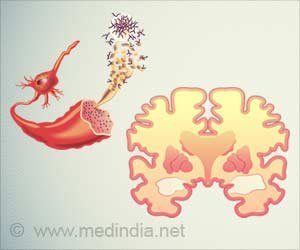Irisin’s Role in Battling Alzheimer’s Plaques and Tangles

deposits in various mouse models of AD, but the mechanisms involved have remained a mystery.
Exercise increases circulating levels of the muscle-derived hormone irisin, which regulates glucose and lipid metabolism in fat tissue and increases energy expenditure by accelerating the browning of white fat tissue.
Link Between Exercise and Alzheimer’s Progression
Studies have revealed that irisin is present in human and mouse brains and that its levels are reduced in patients with AD and mouse models of the condition.
Advertisement
To test whether irisin plays a causal role in the link between exercise and reduced amyloid beta, Se Hoon Choi, Ph.D., and Eun Hee Kim, Ph.D., of the Genetics and Aging Research Unit at MGH, along with additional research colleagues applied the hormone to their 3D cell culture model of AD.
“First, we found that irisin treatment led to a remarkable reduction of amyloid beta pathology,” says Choi. “Second, we showed this effect of irisin was attributable to increased neprilysin activity owing to increased levels of neprilysin secreted from cells in the brain called astrocytes.”
Neprilysin is an amyloid beta-degrading enzyme that is elevated in the brains of mice with AD that were exposed to exercise or other conditions leading to reduced amyloid beta.
The researchers uncovered even more details about the mechanisms behind irisin’s link to reduced amyloid beta levels. For example, they identified integrin αV/β5 as the receptor that irisin binds to on astrocytes to trigger the cells to increase neprilysin levels.
Furthermore, they discovered that irisin’s binding to this receptor causes reduced signaling of pathways involving two key proteins: extracellular signal-regulated kinase (ERK) and signal activator of transcription 3 (STAT3). Reduced ERK-STAT3 signaling was critical for the irisin-induced enhancement of neprilysin.
Previous studies have shown that in mice, irisin injected into the bloodstream can make its way into the brain, making it potentially useful as a therapeutic.
“Our findings indicate that irisin is a major mediator of exercise-induced increases in neprilysin levels leading to the reduced amyloid beta burden, suggesting a new target pathway for therapies aimed at the prevention and treatment of Alzheimer’s disease,” says Rudolph Tanzi, Ph.D., a senior author of the study and director of the Genetics and Aging Research Unit.
Reference :
- Irisin reduces amyloid-b by inducing the release of neprilysin from astrocytes following the downregulation of ERK-STAT3 signaling
– (https://www.sciencedirect.com/science/article/pii/S0896627323006232?via%3Dihub)
Source: Eurekalert
Source link
#Irisins #Role #Battling #Alzheimers #Plaques #Tangles



